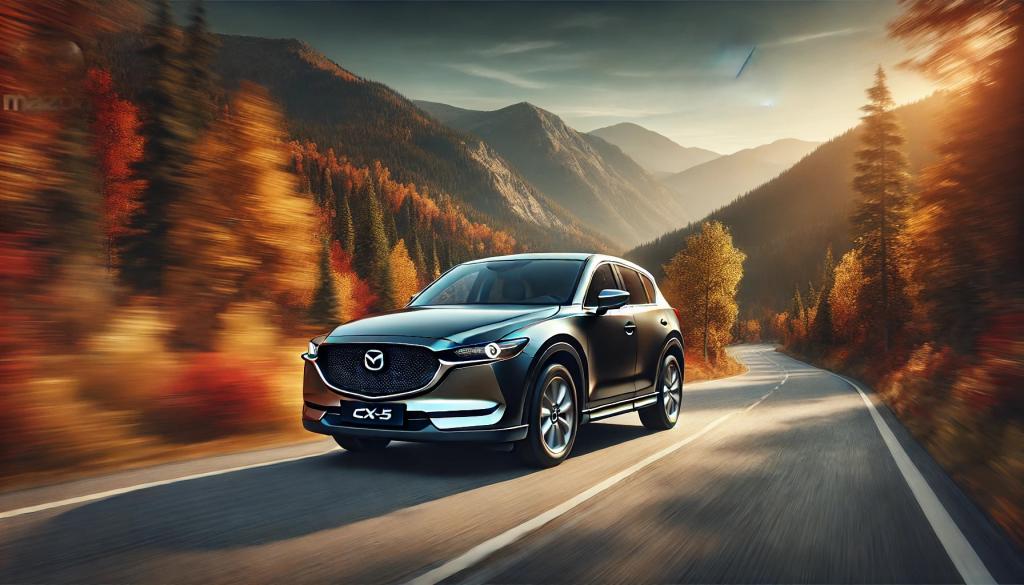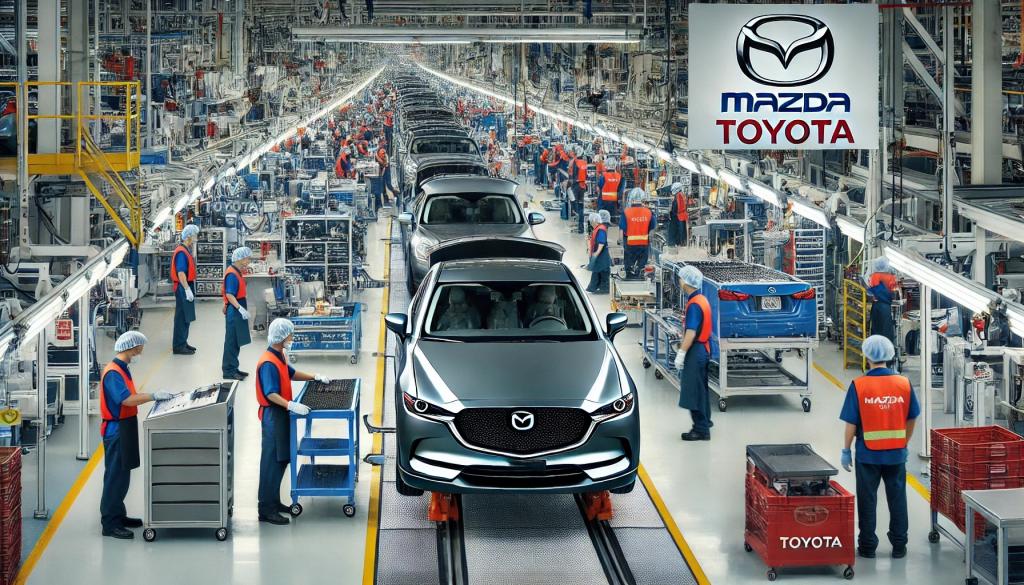
A Mazda is synonymous with good performance and solid reliability. This car brand, originating from Japan, is known for its innovative designs. Many consumers are drawn to its aesthetics and the engaging driving experience. Mazda's advanced SkyActiv technology is also impressive—it aims to optimize fuel efficiency without compromising performance.
But Mazda, for all its popularity in North America, has yet to be made domestically in the US. So, is Mazda considered an import? Furthermore, didn't Mazda used to have a manufacturing plant in the US? And hasn't it joined with another Japanese brand to operate an assembly line for one of its cars?
With all these questions regarding Mazda, learning about Mazda's origins and operations can be useful. Find out the answers in this article.

Mazda in the United States
Mazda's presence in the US has grown significantly since it entered the American market in 1970. It's offered a diverse lineup of sedans, SUVs, and sports cars, so the brand appeals to a broad audience. Between 1974 and 2015, Mazda even partnered with American manufacturer Ford, although the partnership ended due to shifting focus from both companies.
Mazda has a strong following in the US. Models like Mazda CX-5 have become popular for their versatility and value proposition. Meanwhile, Mazda3 has garnered attention for packing luxury-level features into an affordable passenger car. Mazda's ability to carve out a niche in the competitive automotive landscape has further solidified its status.
However, some Mazda models, especially certain performance variants, were never officially sold in the US. They still have a niche following but weren't available for sale in American showrooms. Mazda often offers specific trims and feature packages tailored to the preferences of American car buyers, but there are many more that weren't available in the US.
For example, sedans like Mazda2 and Mazda6 aren't always readily available in the nation, and the compact hatchback Mazda Carol is sold only in Japan.
American productions for Mazda cars
An imported car is a vehicle produced outside the country in which it is sold. It's essentially any vehicle brought into the US from a foreign country. These vehicles are manufactured by foreign automakers. Then, they're shipped to another country for consumer purchase. In the US, vehicles produced by companies based outside North America are generally considered imports. This includes brands like Mazda.
However, Mazda does have one assembly plant in the US. In this case, cars assembled domestically with a high percentage of locally sourced components might be considered domestic, if only for regulatory and marketing purposes. However, some would argue that if a car is only assembled here with most of its parts (70%-80%) sourced from overseas, it means it's not a domestic car.
Currently, Mazda doesn't produce any of its cars in the US. Mazda Motor Manufacturing USA, which used to be in partnership with Ford to open a facility in Flat Rock, Michigan, has already closed down in 2012. Ford then bought Mazda's stakes in the company, making it no longer owned by the Japanese company.
Only recently did Mazda start producing one of its cars, the CX-50, in Huntsville, Alabama, USA. The company had another partnership (this time with Toyota) to open a manufacturing plant. However, this facility is run as a joint venture and only produces one Mazda car and one Toyota car (Toyota Corolla Cross).
If you see a Mazda that's not a CX-50, there's a high chance that said Mazda is an import. Only the Mazda CX-50 cannot be considered an import car.

Defining "domestic cars"
In comparison, the term "domestic car" usually refers to a vehicle designed, manufactured, and marketed primarily for sale within the country of its origin. The criteria for "domesticity" may depend on the following factors:
- Where the vehicle's parts are sourced
- Where it's assembled
- The location of the manufacturer's headquarters
In America, there's no doubt that certain automakers are considered domestic. They include the "Big Three" automakers: General Motors, Ford, and Stellantis North America (formerly Fiat Chrysler Automobiles). These vehicles not only have their assembly plants located within the country, but they also source the majority of their components locally.
From its origin alone, Mazda is clearly a foreign brand with a foreign name. Regardless of where Mazda's parts are sourced, the fact that it doesn't have an exclusive manufacturing plant in the US underscores its "foreign"-ness. Moreover, while Mazda does have an office for its North American operations in Irvine, California, its headquarters remains in Fuchu, Hiroshima, Japan.
Whether a car is considered domestic may be subject to a person's perspective. However, most vehicles produced by foreign-based companies, even if manufactured or assembled within the US, are still typically referred to as "imports." Based on this, Mazda can once again be considered an import.
Mazda's Production Locations
With Mazda's global popularity, it makes sense that the company has set up manufacturing facilities in different countries across the globe. Mazda's main facilities are still located in Hiroshima, Japan, but other countries around the world are also hosting Mazda facilities.
Mazda's manufacturing facilities in Japan
Mazda runs three plants in two prefectures in Japan: the original Hiroshima Plant, the Miyoshi Plant, and the Hofu Plant in Yamaguchi.
These facilities are renowned for producing a wide range of passenger cars both for the Japanese market and for export. They include the assembly lines of popular Mazda models. The Hiroshima plant is Mazda's primary production site. This plant is responsible for a sizable portion of Mazda's vehicle sales worldwide.
While the Miyoshi Plant is specifically meant to manufacture engines, the Hofu Plant specializes in -wheel-drive and rear-wheel drive configurations. These assembly hubs ensure that Mazda maintains its reputation for reliable vehicles.

Mazda's manufacturing facilities outside of Japan
Here's a partial list of Mazda's manufacturing facilities outside Japan:
- Mexico: Mazda has a plant in Salamanca, Guanajuato. It started operations in 2014. This facility produces a variety of models, including the Mazda2 and Mazda3, for various markets including North America.
- Thailand: Another important production facility Mazda uses outside Japan is located in Rayong. The plant, Auto Alliance (Thailand) Co., Ltd., is a joint venture with Ford Motor Company. This location is responsible for manufacturing a range of models that serve the global market.
- Malaysia: In Kulim, Mazda operates a manufacturing plant in partnership with local conglomerate Bermaz Motor. This facility assembles vehicles for the local and regional Southeast Asian markets.
- China: Mazda also has a plant in Nanjing, Jiangsu. There's a plant for automobile manufacturing and another one for engine manufacturing. Mazda's Chinese plants serve the Chinese market exclusively.
Up until 2022, Mazda even had a presence in Europe. It ran a manufacturing plant in Vladivostok, Russia, as a joint venture (Mazda Sollers Manufacturing Rus) with Sollers, a holding company. However, due to the war between Russia and Ukraine, the production has been stopped. Sollers has bought back Mazda's 50% stake.
These strategic manufacturing locations allow Mazda to cater to regional demands more efficiently. They are also Mazda's way of addressing the logistical challenges of exporting vehicles from Japan to international markets.
How Can US Consumers Import a Mazda?
US consumers have a couple of choices when importing a Mazda vehicle. The most straightforward method is to purchase a new Mazda from a local dealership. Mazda has a strong presence in the North American market, so US consumers can get available models through various dealerships and showrooms.
Generally speaking, Mazda models built for the North American market are left-hand drive. They're typically prefabricated with specifications that comply with US regulations. However, for models that are not sold in the United States, consumers can look to import the vehicle from Japan or other countries.
To import a Mazda, consumers must adhere to US regulations set by the Environmental Protection Agency (EPA) and the Department of Transportation (DOT). Cars must meet certain emission and safety standards.
Additionally, the 25-year import rule allows consumers to import cars deemed as classics without needing to meet the same stringent regulations placed on newer models. Under this rule, any vehicle 25 years or older from its manufacturing date does not require DOT or EPA compliance.
Before importing, however, the car must also pass through US Customs and Border Protection (CBP). Importers will need to fill out the appropriate paperwork, such as:
- DOT HS-7 form
- EPA form 3520-1
- Proof of ownership
- Import duty
Importing can be more complex for newer Mazda vehicles that are not yet 25 years old. Consumers must use a Registered Importer (RI) responsible for ensuring that the vehicle is modified to comply with US standards. Import eligibility decisions are made by US authorities. Not all modern cars will be eligible for importation through this path.

Final Thoughts on Mazda as an Imported Car
Despite not being manufactured in the US and only a certain model assembled in the country, Mazda's presence in the US remains strong. Thanks to its reliability, affordability, and solid performance, Mazda has a strong consumer base in America. Hence, although Mazda can be categorized as an import, there's no stopping American consumers from owning a Mazda and loving it.
Do you want to import or export a Mazda? Rely on us at A1 Auto Transport. We ship cars from anywhere in the world to the US and deliver them to your address. Get a free quote today and start shipping.






 Share on Facebook
Share on Facebook Share on LinkedIn
Share on LinkedIn Share on Twitter
Share on Twitter




 Google
Google  Instagram
Instagram  Trustpilot
Trustpilot 



